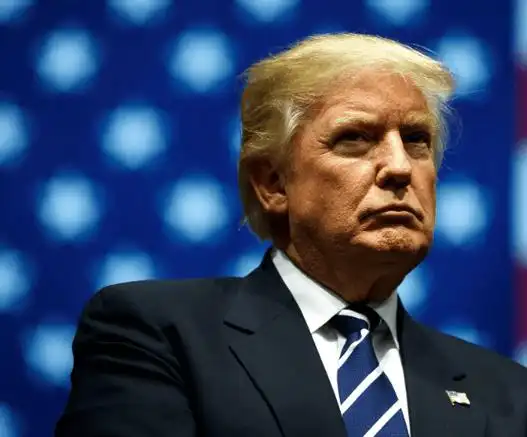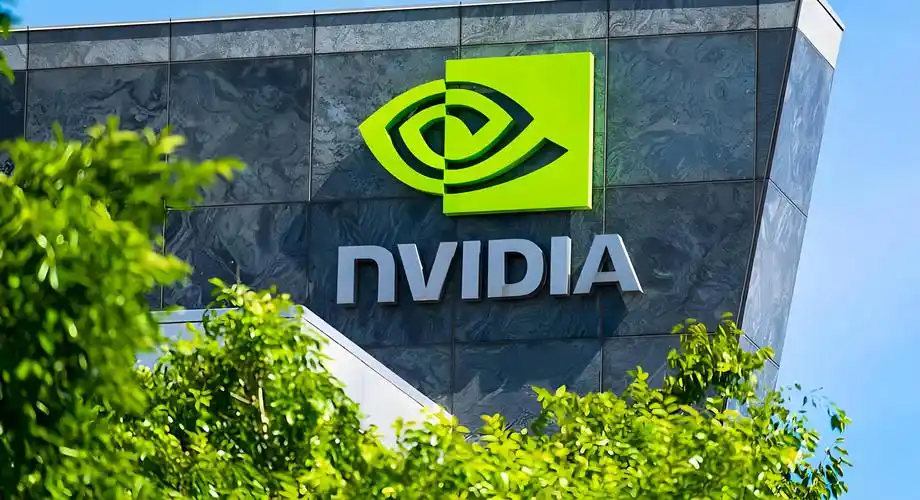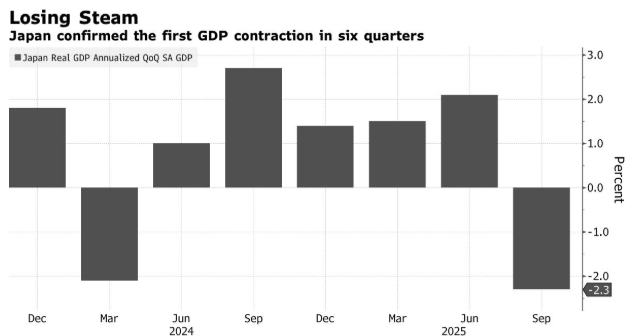Data released by China’s National Bureau of Statistics on Wednesday showed that the country’s gross domestic product (GDP) grew by 5.4% year-on-year in the first quarter. This growth rate was higher than the 5.2% consensus forecast of economists surveyed by Bloomberg.

In March, industrial added value rose by 7.7% year-on-year, the fastest growth since June 2021. Retail sales increased by 5.9%, the best growth since December 2023, far exceeding economists’ expectations of a 4.3% increase.
“The most surprising figure is the retail sales, which indicates that the consumption subsidies are taking effect,” said Lin Yanling, an economist at Societe Generale covering the Greater China region. “The industrial production data exceeded expectations, but this is understandable after the strong export data.”
These data cover a period before the United States significantly raised tariffs in April, which escalated the trade war between the world’s two largest economies. Tariffs on most Chinese goods have risen to at least 145%, a level that could cause China’s exports to shrink this year and undermine an important growth driver.
Despite the release of optimistic data, the National Bureau of Statistics also issued a warning, emphasizing the need to increase support for the economy.
It should be noted that the external environment is more complex and severe, and the domestic effective demand growth momentum is insufficient. The foundation for the sustained recovery and growth of the economy is not solid, the National Bureau of Statistics said in a statement. “More proactive and effective macro policies must be implemented.”
After the data release, the offshore RMB/USD exchange rate remained stable at 7.3236. The yield on 10-year treasury bonds was basically flat at 1.64%.
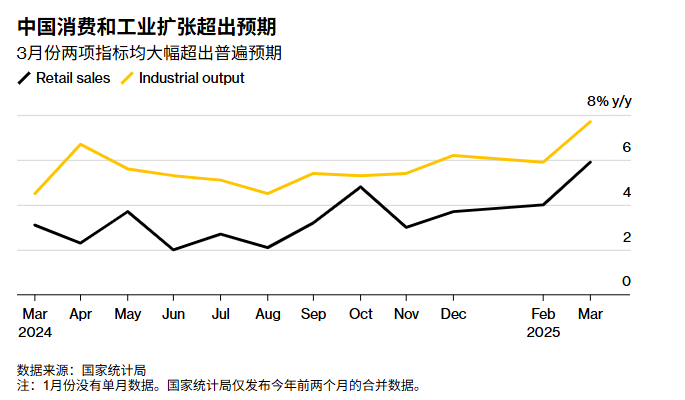
Some economists predict that the People’s Bank of China will cut interest rates or lower the reserve requirement ratio for banks as early as this month; others expect that the central bank will increase fiscal borrowing and spending by several trillion yuan to fill the gap left by the decline in exports.
To counter the impact of tariffs, China needs to rapidly boost domestic demand, including stimulating consumption and investment. Even before the US tariffs affect export-related jobs, the sluggish labor market remains a key weakness that hinders consumer spending.
The impact of the trade war is likely to start showing up in economic activities from April. After China’s exports soared in March, trade activities may have slowed down rapidly this month as global companies suspended orders and cut production.
President Donald Trump has called on China to engage with him to start negotiations aimed at resolving the escalating trade dispute between the world’s two largest economies.
“The ball is in China’s court. China needs to make a deal with us. We don’t have to make a deal with them,” White House press secretary Caroline Levitt read Tuesday what she said was a statement dictated by Trump.
The statement continued: “China is no different from other countries, only on a larger scale. And China wants what we have, what every country wants, what we have – the American consumer – or in other words, they need our money.”
These remarks once again indicate that the trade war between the two sides shows no sign of ending, and both sides have raised trade barriers to astonishing levels.
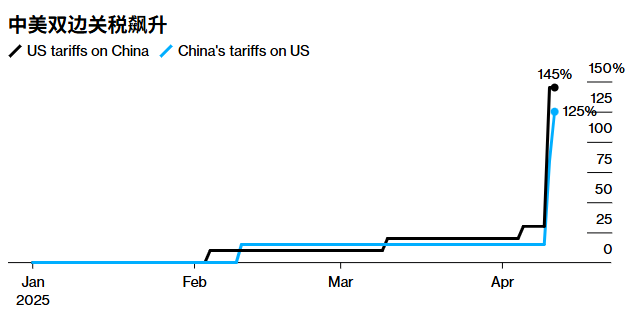
According to informed sources, China has ordered airlines to stop accepting aircraft from Boeing Co. This is the latest countermeasure taken by Beijing in response to Trump’s decision to raise tariffs on Chinese goods to 145%.
So far, China and the United States have not had high-level contacts. Instead, they have been attacking each other and continuously raising tariffs. China announced on Friday that it will impose a 125% tariff on all US goods starting from April 12. This is the latest escalation since Trump imposed a 34% tariff on Chinese imports on April 2.
Each time China announces its response measures, the US president raises tariffs. The White House also insists that China must take the initiative to contact first before negotiations can start, while Beijing says it is unclear about the US demands.
